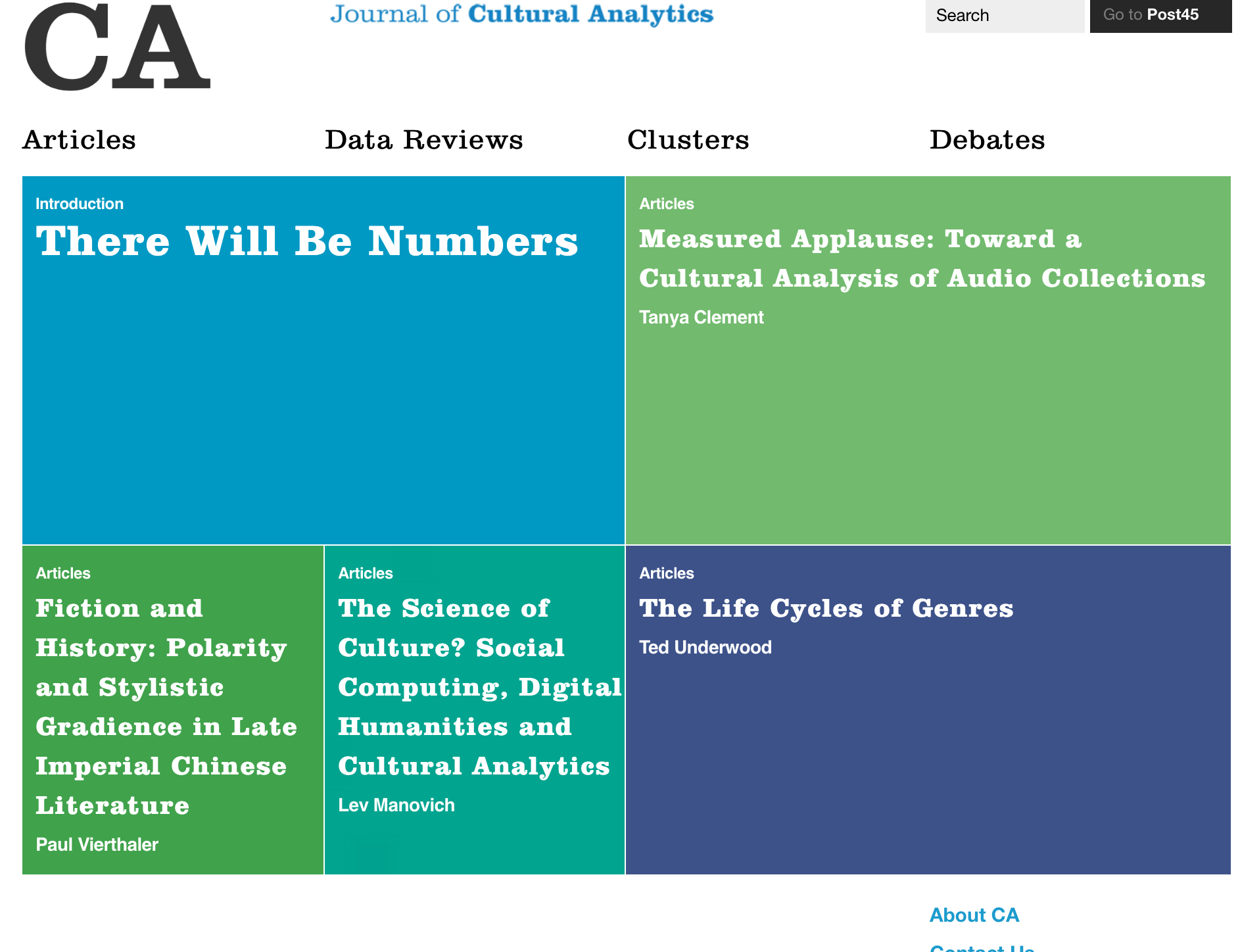CA Fall Preview: Food, Folklore and Lots of Novels
We have some exciting new material that will be appearing shortly in CA: Journal of Cultural Analytics, which I thought I would share here.
Dan Jurafsky, Victor Chahuneau, Bryan R. Routledge, and Noah A. Smith will have a new piece out on the relationship between food menus and social class. As they argue in their piece, “The language used to discuss food offers a powerful way to examine associations of culture and identity and better understand how our cultural norms around food are shaped by the lens of class status and economics. We address this question by exploring Bourdieu’s notions of distinction as reflected in the language of US restaurant menus. Our study uses 5 million words of dish descriptions from 6500 menus drawn from 7 US cities, comparing the different linguistic strategies used in restaurants in four different price classes.”
Timothy Tangherlini, David Mimno, and Peter Broadwell have a new piece on classification and folklore that takes an in-depth look at the long history of folklore classification and what happens when a machine gets hold of these systems. In addition to providing a practical tool for identifying intersections between folkloric stories, they also show how confusion matrices can be used as a tool for understanding the ways in which stories can occupy multiple different generic categories at once. As they write in their piece challenging the prevailing CS view of ground truth labels, their approach “highlights the fundamentally different perspective that humanists have on classification as a tool. Our goal is not to create a system that mimics the decisions of a human annotator, but rather to better represent the porous boundaries between labels.”
The NovelTM research group will be producing a cluster on “The Novel and Genre,” with contributions from Ted Underwood, Matthew Wilkens, Matthew Jockers and Gabi Kirilloff, Matt Erlin, Andrew Piper, Mark Algee-Hewitt and his team Laura Eidem, Ryan Heuser, Anita Law, and Tanya Llewellyn. The aim of this cluster is to address how literary scholars have historically grouped novels, whether as subcategories like detective fiction, gothic fiction, white-male fiction, or as marketing devices used by publishers in the eighteenth century (the tale, romance, history), or as subject to different kinds of characterization, or even more fundamentally through the novel’s distinction from non-fiction. In each article, the cluster will explore how computational approaches can shed light onto the coherence and affinities between novels and between different kinds of groupings of novels. What does such a computational understanding of genre allow us to do and say about the history of the novel?

